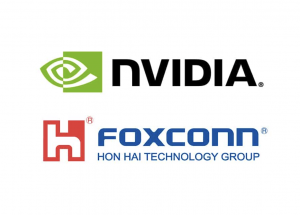D
Deleted member 2197
Guest
Some more information on the Foxconn/Nvidia supercomputer in Taiwan.

 www.hpcwire.com
www.hpcwire.com

NVIDIA and Foxconn to Power Taiwan’s AI Future with New Supercomputer in Kaohsiung
Oct. 8, 2024 — NVIDIA and Foxconn are building what the two companies are describing as Taiwan’s largest supercomputer, marking a milestone in the island’s AI advancement. NVIDIAThe project, Hon Hai […]
With an expected performance of over 90 exaflops of AI performance, the machine would easily be considered the fastest in Taiwan. Foxconn plans to use the supercomputer, once operational, to power breakthroughs in cancer research, large language model development and smart city innovations, positioning Taiwan as a global leader in AI-driven industries.
Construction has started on the new supercomputer housed in Kaohsiung, Taiwan. The first phase is expected to be operational by mid-2025. Full deployment is targeted for 2026. The project will integrate with NVIDIA technologies, such as NVIDIA Omniverse and Isaac robotics platforms for AI and digital twins technologies to help transform manufacturing processes.
“Powered by NVIDIA’s Blackwell platform, Foxconn’s new AI 64 rack supercomputer is one of the most powerful in the world, representing a significant leap forward in AI computing and efficiency,” said Foxconn Vice President and Spokesperson James Wu.
The GB200 NVL72 is a state-of-the-art data center platform optimized for AI and accelerated computing. Each rack features 36 NVIDIA Grace CPUs and 72 NVIDIA Blackwell GPUs connected via NVIDIA’s NVLink technology, delivering 130TB/s of bandwidth. NVIDIA NVLink Switch allows the 72-GPU system to function as a single, unified GPU.
Taiwan-based Foxconn, officially known as Hon Hai Precision Industry Co., is the world’s largest electronics manufacturer, known for producing a wide range of products, from smartphones to servers, for the world’s top technology brands.
With a vast global workforce and manufacturing facilities across the globe, Foxconn is key in supplying the world’s technology infrastructure. It is a leader in smart manufacturing as one of the pioneers of industrial AI as it digitalizes its factories in NVIDIA Omniverse.
Foxconn was also one of the first companies to use NVIDIA NIM microservices in the development of domain-specific large language models, or LLMs, embedded into a variety of internal systems and processes in its AI factories for smart manufacturing, smart electric vehicles and smart cities.





